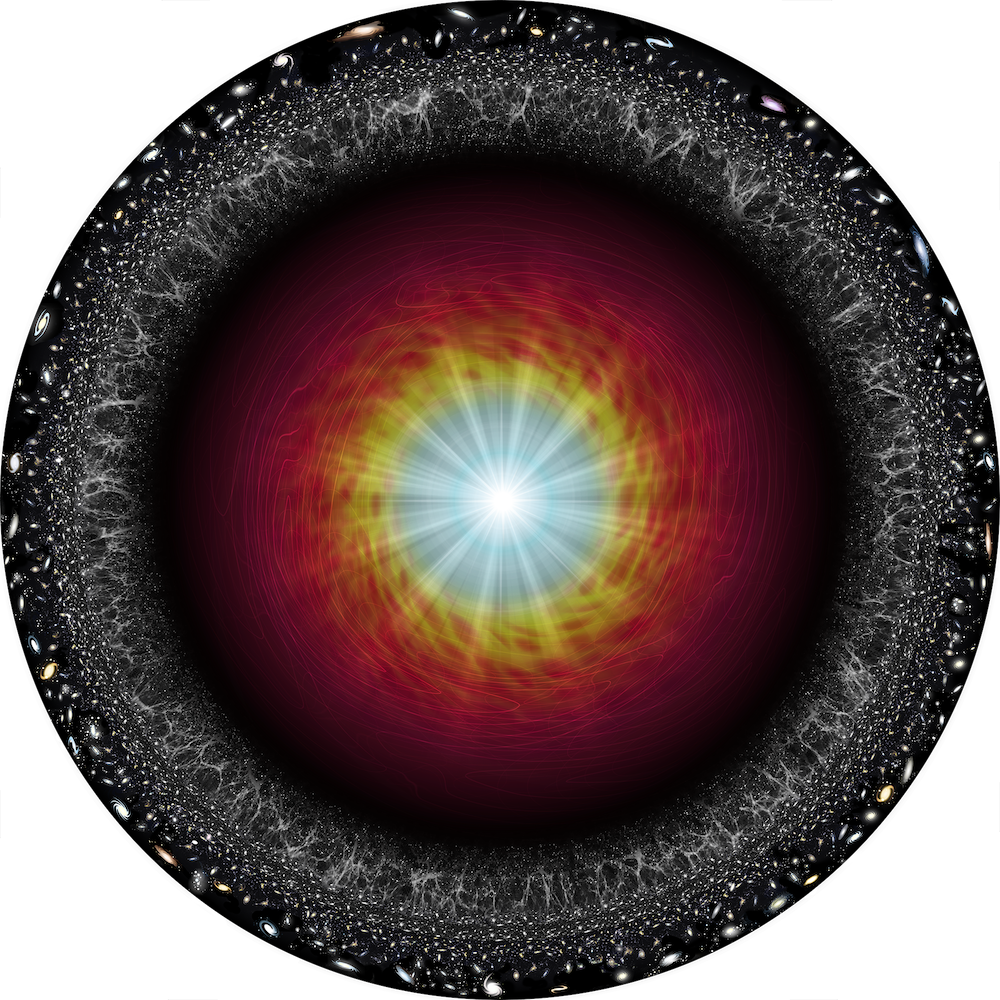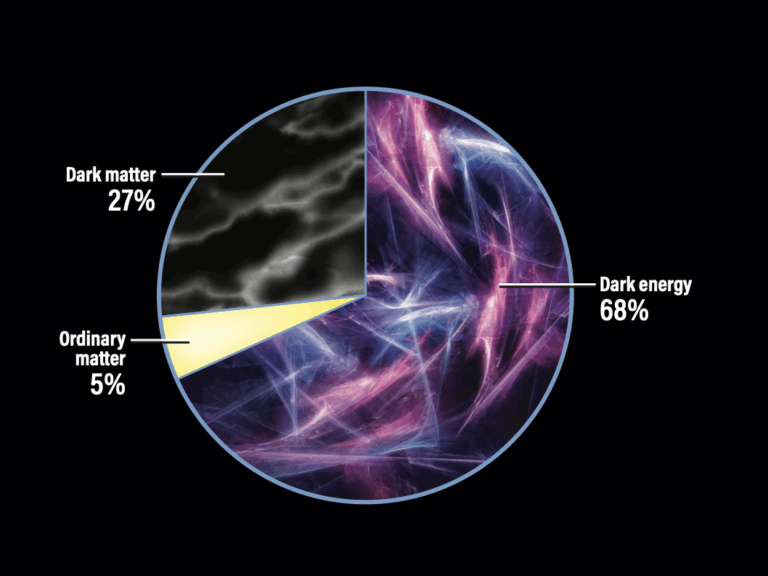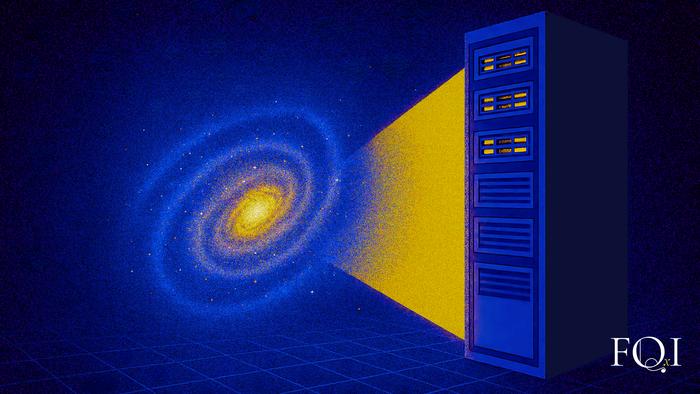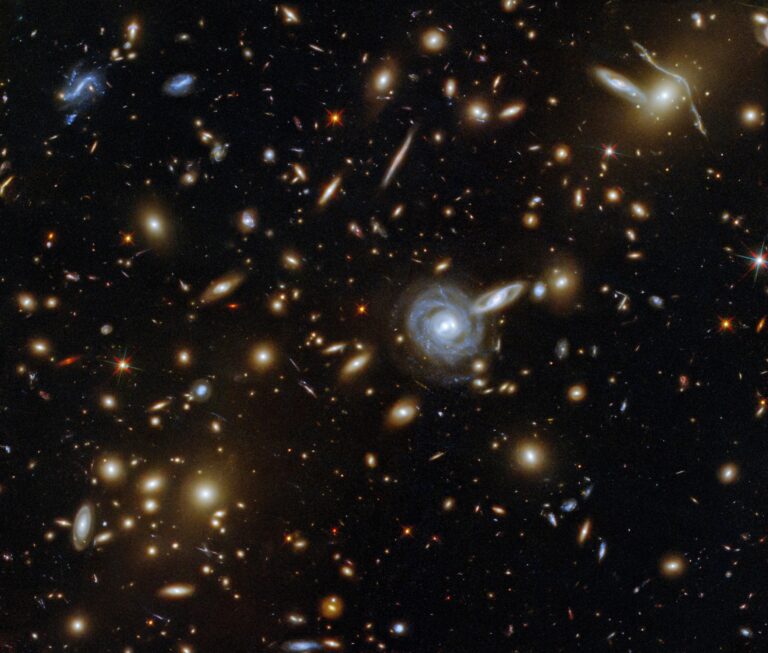
Key Takeaways:
- The universe has no center.
- The Big Bang happened everywhere, not from a single point.
- Space itself expanded, not just matter within space.
- The universe has no edge or boundary.
Where is the center of the universe (where the Big Bang occurred) and where is its edge?
As counterintuitive as it may seem, the universe has no center, and it has no boundary.
The idea of a Big Bang acting like a giant fireworks explosion hurtling matter and energy outward is pervasive, but misleading. As bizarre as it sounds, it wasn’t “stuff” that exploded outward, it was space itself! In essence, the Big Bang happened everywhere. Since the time of Einstein, it has been known that space is not simply a backdrop in which we move, but an actual thing that can be measured. It has shape, it can be bent, and it can expand.
If this sounds nonsensical, think of the surface of a balloon expanding into three-dimensional space. A two-dimensional creature confined to the surface of the balloon could never find the center, because the center is located in 3D space, and not in the 2D space in which the creature lives. We are 3D creatures stuck in a universe with at least four dimensions, so we cannot see the center of our universe. In fact, there’s no reason why there has to even be a center anywhere.
The same reasoning holds true for the “edge” of the universe. Where is the edge of a balloon? To define an edge (or a center), you need to assume that there is something into which the universe expands. As I just explained above, that need not be true, and even if it is, we can never detect this “metaverse.”
When thinking about cosmology, always remember the words of British biologist J.B.S. Haldane: “The universe is not only queerer than we suppose, it is queerer than we can suppose.”
Phil Plait
ACC, Inc.
(March 1999 issue)









